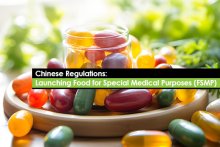Wide range of food products, dietary supplements and other health foods that are consumed to enhance the nutritional value of food are constantly growing, worldwide. All combined can generally be termed as nutraceuticals. Global consumers are viewing the nutraceutical products as potential alternatives to medicinal products owing to their preventive characteristics against some of the common lifestyle diseases. Aligning with the increasing emphasis on nutritional value of foods from international health governance body - WHO; developed, emerging and less evolved countries have already started encouraging their usage.
Growing acceptance and rise in nutraceutical consumption has opened new market opportunities. An external research projects that the nutraceutical products’ global market value may grow up to US $ 578.23 billion at CAGR 8.8% by 2025. However, the market is deterred by traditional implications and other hurdles which can hinder user acceptance. Further, the regional health authorities’ varying Regulatory requirements make it increasingly challenging for the organizations for compliant market-entry.
In such scenarios, with a well-defined market and Regulatory strategies, the nutraceutical companies can ensure compliant submissions for quick health authority acceptance and sure shot marketability. What kind of market and Regulatory strategies they should look for? Here are a few…
Key Market Strategies
As market trends and interests are subject to change from time to time, manufacturers must aim to deliver their products aligning with market strategies, such as:
- Develop products that are in demand in multiple regions
- Aim at developing products that cater to a wide range of health conditions
- Personalize the nutraceutical products with OTC variants
- Lookout for current trends and changing consumer interests and adapt them
- Develop products with ingredients that are close to traditional foods of the targeted region
- Research and develop new products with better and efficacious claims that enable the product to stand out in the given market
- Innovate and deliver novel food products availing technological advancements
- Engage in evolving marketing mechanisms such as digital marketing to promote their products vehemently
- Adopt strategic approaches such as joint ventures, acquisitions, partnerships, expansions etc. to minimize risk and maximize productivity
Key Regulatory Strategies
Apart from carving an accurate market pathway, adopting certain Regulatory approaches can significantly enhance product value in the eyes of health authorities and consumers as well. They include but are not limited to the Regulatory strategies, such as:
- Decode the local definition of health foods / nutraceuticals / dietary supplements according to the regional regulations and review and classify them accordingly
- Remain transparent about the ingredients and formulation of the products
- List precise ingredients on the product package
- Align to domestic government policies that help to promote consumption of nutraceuticals
To conclude, manufacturers must draw up quick and effective strategies targeting both established and emerging markets for a competitive edge. For ensuring compliance and improving marketability respectively, expert consultation might prove helpful. Scale up your compliance efforts.





